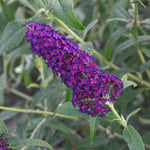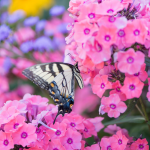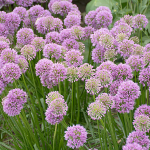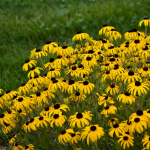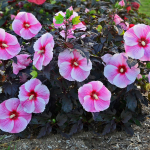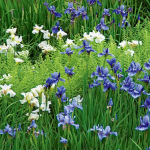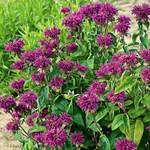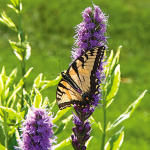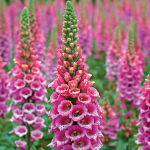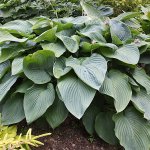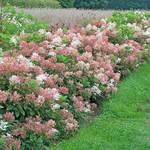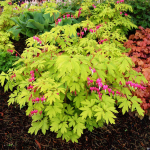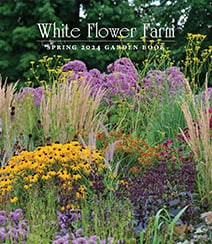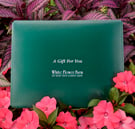Product Details
Although the colorful flowers of Strawberry Sundae® resemble those of Vanilla Strawberry™, this compact new Hydrangea paniculata selection by the same breeder grows only 4–5' tall. The blossoms evolve in similar fashion as the season progresses, from creamy white to pink to red. An award-winning variety that provides an easy way to add color to small spaces. 'Rensun' PP 25,438
Because Paniculata Hydrangeas bloom on new growth, they typically flower normally even if the twigs have been killed back by frost. Plant in a sunny, well-drained spot; some early afternoon shade is beneficial in hot southern regions. Prune in late winter or early spring.
Hydrangea is a valuable genus of some 100 species of shrubs and vines grown for their large and very showy flower heads. Hydrangeas are at their best in summer and fall—a quiet time for most woody plants—and are worth having for that reason alone. For more information on Hydrangea care, click on Growing Guide.
Shipping
HOW PLANTS ARE SHIPPED
The size of the plants we ship has been selected to reduce the shock of transplanting. For some, this means a large, bareroot crown. Others cannot travel bareroot or transplant best if grown in containers. We ship these perennials and annuals in 1 pint pots, except as noted. We must point out that many perennials will not bloom the first year after planting, but will the following year, amply rewarding your patience. We ship bulbs as dormant, bare bulbs, sometimes with some wood shavings or moss. Shrubs, Roses, vines, and other woody plants may be shipped bareroot or in pots. The size of the pot is noted in the quick facts for each item.
WHEN WE SHIP
We ship our bulbs and plants at the right time for planting in your area, except as noted, with orders dispatched on a first-come, first-served basis by climate zone. We also ship a wide range of containers and planters, tools, supplies, fertilizers, garden wear, garden decor items, as well as indoor decorations like wreaths and dried bouquets when available. Estimated dates for shipping are indicated in the green Shipping Details box for each item. Please supply a street address for delivery. Kindly contact us with two weeks notice, if you'll be away at the expected time of delivery.
OUR GUARANTEE
We guarantee to ship plants that are in prime condition for growing. If your order is damaged or fails to meet your expectations, we will cheerfully replace or refund it. Please contact our Customer Service Department at 1-800-503-9624 or email us at [email protected]. Please include your order number or customer number when contacting us.
Reviews
Average Customer Rating:
 (3 Reviews)
Write a Review
(3 Reviews)
Write a Review
Sort by:
Doing great 
A viewer from Pittsburgh, PA
Disappointed 
Linda from South Carolina
Dear Linda,
Thank you for your feedback. With pot-grown perennials or shrubs, you will see yellow or brown foliage at this time of year and possible loss of foliage. This is a normal sign that the plants are going dormant for the winter and is no cause for concern. If you are willing to forward us a picture to [email protected] we could identify if this shrub is going dormant or if there is another cause for the appearance upon arrival.
Our plants are fully guaranteed for one year, and if your shrub does not perform as you expect next spring please contact us for a replacement or refund.
Sincerely,
Customer Service
Growing guide
Latin Name Pronunciation: hye-dran'jee-uh
Growing Hydrangea paniculata
Light/Watering: Most varieties thrive in full sun in the North, but in the South afternoon shade is required. Moist soils that do not dry out are best; do not plant in hot, dry, exposed sites. Mulch to conserve moisture and buffer soil temperatures. Avoid watering with overhead sprinklers to discourage fungal diseases.
Fertilizer/Soil & pH: Do not fertilize in the first growing season. Fertilizer is optional, once in spring with a fertilizer designed to encourage blooms (such as 15-30-15). An annual topdressing of compost is always beneficial. Soils should be moist but well drained, and rich in organic matter. Flower color is not affected by soil pH.
Pests/Diseases: None serious. Occasionally powdery mildew will infect the foliage, especially in humid areas with poor air circulation. Fungal leaf spots can occur, especially in fall when watered with overhead sprinklers, but they do not affect the overall health of the plant. Treat with Neem oil or horticultural oil, if the problem is serious, and be sure to rake up and destroy all fallen foliage in the autumn.
Pruning: Little pruning is needed, except to remove any dead or broken branches, and should be done only in winter and or early spring. Hydrangea paniculata blooms on new wood so avoid pruning in late spring and summer when flower buds are forming and getting ready to bloom. If desired, to rejuvenate an older plant, a third of the older and crossed branches can be cut back to encourage stronger branching with more numerous, although smaller, blossoms.
Tree form Hydrangea paniculata: Prune in late winter or early spring, removing lower suckers and up to half the older top growth.
Transplanting: Young plants may be transplanted when dormant in early spring. Prune top growth after transplanting to reduce water loss.
Calendar of Care
Early Spring: If desired, prune as indicated above. Feed plants (optional) with a fertilizer high in phosphorus (such as 15-30-15) to encourage blooms. Complete any transplanting before leaves unfurl.
Mid-Spring: Mulch plants after soil has warmed to conserve moisture and buffer soil temperatures. Watch for powdery mildew and treat as needed. Do not prune as doing so risks removing developing flower buds.
Summer: Do not prune in summer when flower buds form. Make sure to water well in dry weather and as flowers begin to develop. Lack of water at this time can cause blossoms to dry out prematurely and fail to develop color in varieties that display changing hues throughout the season.
Fall & End-of-Season Care: Remove and destroy any fallen foliage that could harbor disease spores. Cover the ground with up to 3" of mulch; avoid piling mulch against the trunk of the plant. Enjoy the dried flower heads through the winter, cut some to display indoors or deadhead them in late fall if you prefer, but do no substantial pruning.
For more information on growing Hydrangeas, click here.

